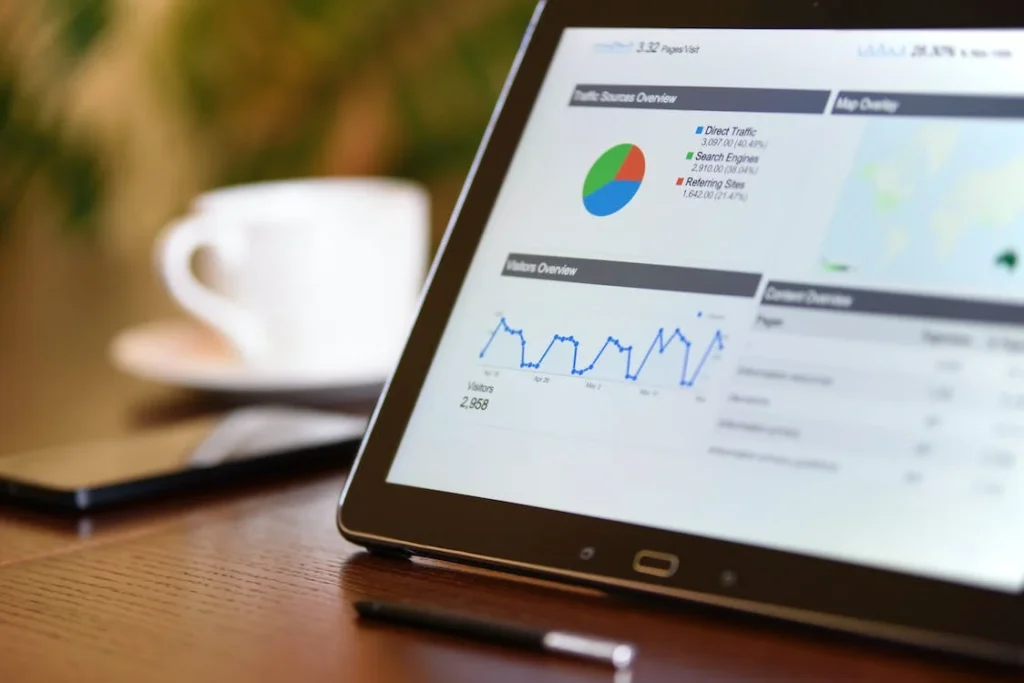In the ever-evolving world of digital marketing, SEO has carved its niche as a crucial game changer. On-Page SEO, a significant component of the SEO strategy, has gained increased attention for its role in improving website ranking and attracting organic traffic.
Think of your website as a book. On-Page SEO can be likened to ensuring the book has a compelling title, coherent chapters, and an enticing summary on the back cover. It’s about enhancing your website’s readability and relevance for both the audience and search engines.
If you are seeking to boost your brand’s visibility or aiming to solidify your company’s digital footprint, understanding and leveraging On-Page SEO is paramount. This comprehensive guide provides in-depth insights into the best practices, strategies, and tools to optimize your website’s On-Page SEO for higher rankings. But before delving into the tactics, let’s first dissect the core elements of On-Page SEO.

The Core Elements of On-Page SEO
There are several core elements of having a great on-page SEO, but nothing beats targeting the right keywords.
Keywords help boost On-Page SEO
Understanding Keyword Research
In the language of SEO, keywords are the words or phrases that people type into search engines. They are the signposts guiding search engines to relevant content. Keyword research involves identifying the terms that your potential audience uses when looking for products, services, or content like yours.
Understanding these search terms allows you to optimize your website content, enabling search engines to identify and rank your pages. It’s akin to learning the language of your audience and communicating in a manner they understand best.
Importance of Keyword Placement
Now that you’ve discovered your keywords, where you place them within your content matters significantly. The primary areas for keyword placement include the title tag, headings, URL, meta description, and throughout the content body. Proper keyword placement acts as a roadmap for search engines, indicating the relevance of your content to specific search queries.
Long-tail Keywords
Long-tail keywords are extended phrases containing three or more words. They are more specific, and while individually they might bring less traffic, collectively, they often make up the majority of a website’s search-driven traffic. Moreover, long-tail keywords typically indicate a user’s intent more clearly, allowing you to tailor your content more precisely to user needs.
Keyword Density: What It Is and Why It Matters
Keyword density refers to the number of times a keyword appears on a webpage compared to the total number of words on that page. It’s usually expressed as a percentage. A higher density can help search engines identify the topic of your page, but excessive use can lead to penalties for keyword stuffing. As a rule of thumb, write naturally for your audience first, and optimize for search engines second.
Tools for Keyword Research
Various tools can aid your keyword research process. Google Keyword Planner, SEMrush, and Ahrefs, to name a few, provide insights into keyword volume, difficulty, and competition. These tools can help identify lucrative keyword opportunities to target.
Content is King when it comes to On-Page SEO
The Importance of Quality Content
“Content is King,” a phrase you’ve likely heard in digital marketing circles, underscores the paramount importance of quality content in SEO. Search engines aim to provide users with the most relevant and valuable content. High-quality, informative, and engaging content increases your chances of being recognized by search engines as a valuable resource.
Moreover, quality content improves user engagement metrics such as time on page and bounce rate, which are crucial SEO ranking factors. The takeaway here? Invest time and resources in producing high-quality, unique, and valuable content for your audience.
Writing for Your Audience: User Intent
Understanding user intent is the key to creating content that resonates with your audience. User intent refers to what the user is looking for when they type a query into a search engine. They could be seeking information (informational intent), looking to make a purchase (transactional intent), or trying to visit a specific website (navigational intent).
By aligning your content with user intent, you enhance your chances of meeting your audience’s needs and consequently boosting your SEO rankings. Analyze the top-ranking content for your chosen keywords to gain insights into the user intent behind those queries.

How to Make Your Content Engaging
Engaging content is a magnet for both users and search engines. The following strategies can help enhance content engagement:
- Write compelling headlines: Your headline is the first thing users (and search engines) see, so make it count. It should be enticing and give a clear idea of what the content covers.
- Use visuals: Images, infographics, videos can break up text and provide value in a more digestible and engaging format.
- Include data and examples: Concrete data and examples can enhance your content’s credibility and offer real-world context to your audience.
- Make your content skimmable: Use bullet points, subheadings, and short paragraphs to make your content easy to skim. A well-structured piece encourages readers to spend more time on your page.
The Role of Fresh Content in SEO
Freshness of content is an often-overlooked aspect of SEO. Regularly updating your content signals to search engines that your site is well-maintained and relevant. For certain search queries, especially those related to recent events or trending topics, search engines prefer up-to-date content. Moreover, fresh content provides more value to your audience and can help establish your brand as an authority in your niche.
Using Content to Build Authority
Producing high-quality, valuable content consistently is a potent strategy to build authority and trust with your audience and search engines. In-depth articles, case studies, industry insights, and how-to guides can demonstrate your expertise, making your website a go-to resource for your topic of choice. A site recognized as an authority often enjoys higher rankings in search results.
Metadata helps the website crawler understand the on-page contents
Title Tags
Title tags, often the first point of interaction between a user and your website in search results, are critical to SEO. They provide a concise description of the content on your webpage, guiding both search engines and users.
Ensure that your title tags are unique for each page, accurately descriptive, and include your target keyword. Remember, an engaging title tag can significantly boost your click-through rate.
Meta Descriptions
Meta descriptions are brief snippets that describe the content of a webpage. While not a direct ranking factor, they significantly influence user behavior. A compelling meta description can entice users to click on your link, thereby improving your click-through rate.
Make sure to incorporate your primary keyword, keep it under 160 characters, and ensure it offers a concise and enticing summary of your content.
Header Tags
Header tags (H1, H2, H3, etc.) serve two essential functions in SEO: they provide structure to your content, making it easy for readers to understand and navigate, and they signal to search engines the hierarchy and content of your webpage. The H1 tag should typically contain the page’s primary keyword, but remember, it’s also your headline – so make it catchy and engaging.

How to Optimize Metadata for SEO
Metadata optimization involves ensuring your title tags, meta descriptions, and headers are both search engine and user-friendly. Here are some tips:
- Keyword Placement: Include your main keyword in your title tag, meta description, and H1 tag.
- Uniqueness: Ensure every page on your website has a unique title tag and meta description to avoid duplications.
- Relevance: Your metadata should accurately represent the content of the page. Misleading metadata can lead to high bounce rates, which can hurt your SEO.
URL Structure
Importance of URL Structure in On-Page SEO
The URL structure plays a vital role in SEO. A well-structured URL is easy for both users and search engines to understand. It can help signal the content of the webpage, improve user experience, and even enhance your page’s ranking potential.
Tips for Optimizing URL Structure
- Simplicity: Keep your URLs simple and readable. Users and search engines prefer URLs that are easy to understand and interpret.
- Keyword Usage: Include your primary keyword in the URL. It can reinforce the topic of your page to search engines and help users identify the page’s content.
- Hyphens for Spaces: Use hyphens (-) to separate words in a URL. It improves readability and is the standard practice.
- Lowercase: Always use lowercase letters in URLs to prevent any confusion or errors, as URLs can be case-sensitive.

Advanced On-Page SEO Strategies
Internal Linking
The Benefits of a Well-Planned Internal Linking Strategy
Internal linking refers to linking one page of your website to another page on the same website. When done effectively, it can offer multiple benefits:
- Navigational Aid: Assists users in discovering more content, leading to a better user experience.
- Distributes Page Authority: Helps distribute link equity across your website, boosting the ranking potential of various pages.
- Signals Content Relevance: Allows search engines to understand content relationships and hierarchies on your website.
Best Practices for Internal Linking
- Use Descriptive Anchor Text: The clickable text (anchor text) should provide an idea of the linked page’s content.
- Link Deep: Instead of just linking to your homepage or primary services pages, link to deep, informative content like blog posts or research studies.
- Follow a Natural Flow: Ensure internal links are relevant to the content, providing value to the user.
Image Optimization
Importance of Image Optimization
Images can significantly enhance a user’s experience on your website, but they can also slow down your page’s loading speed if not optimized. Properly optimized images load faster, improve page speed, and can also contribute to SEO.
How to Optimize Images for SEO: File Size, Format, Alt Text
- Reduce File Size: Tools like TinyPNG or Compressor.io can help reduce image size without compromising quality.
- Choose the Right Format: PNGs are suitable for graphics with few colors, while JPEGs are better for photographs.
- Use Alt Text: This descriptive text helps search engines understand the content of the image and aids in accessibility.
Structured Data Markup (Schema Markup)
Understanding Structured Data and Its Relevance to SEO
Structured data, often referred to as Schema Markup, is a type of code added to webpages to help search engines understand the content’s context. When utilized, it can lead to rich snippets (like ratings, images, or prices) appearing in search results, increasing click-through rates.
How to Apply Structured Data Markup
Various online tools, such as Google’s Structured Data Markup Helper, can guide you in adding structured data to your website. The process involves selecting the type of data, tagging the relevant content, and then adding the generated code to your site.
Mobile-First Indexing
What is Mobile-First Indexing
Google’s mobile-first indexing means that Google predominantly uses the mobile version of content for indexing and ranking. With the increasing number of mobile users, it’s crucial that your site offers an optimal mobile experience.
How to Optimize for Mobile-First Indexing
- Responsive Design: Ensure your website is mobile-responsive, adapting seamlessly to different screen sizes.
- Optimize for Speed: Mobile users expect fast loading times. Use tools like Google’s PageSpeed Insights to identify areas for improvement.
The Role of Page Speed in SEO
Importance of Page Speed for User Experience and SEO
Page speed is a critical ranking factor. A slow-loading page can frustrate users, leading to higher bounce rates and negatively impacting SEO. Fast-loading sites offer a better user experience and are favored by search engines.
Tips for Improving Page Speed
- Optimize Images: As mentioned earlier, image size can dramatically affect loading times.
- Use Browser Caching: This stores parts of your website so returning visitors can experience faster load times.
- Minimize HTTP Requests: The more components (like images, scripts, or videos) on a page, the longer it takes to load. Try to streamline your pages and combine files where possible.
Voice Search Optimization
The Rise of Voice Search and Its Impact on SEO
With the increasing popularity of digital assistants like Alexa, Siri, and Google Assistant, voice search has become an essential consideration for SEO. Voice search queries often differ from typed queries, usually being longer and more conversational.
Tips for Optimizing for Voice Search
- Use Natural Language: Content optimized for voice search should sound conversational and answer questions directly.
- Optimize for Local Search: Many voice searches are local (e.g., “near me” queries). Ensure your local SEO is on point.
This concludes our exploration of advanced On-Page SEO strategies. These tactics, combined with the foundational elements discussed earlier, set the stage for a robust and effective SEO strategy.

Pitfalls to Avoid in On-Page SEO
To ensure the success of your on-page SEO strategy, it’s vital to not just know what to do but also understand the common missteps to avoid. Let’s dive into the pitfalls that could be detrimental to your efforts.
Keyword Stuffing
Once a prevalent SEO technique, keyword stuffing involves excessively using keywords in your content. This not only leads to a poor user experience but can also result in search engine penalties. Your content should be natural and written for the user, not just search engines. Remember: relevance and context are key.
Neglecting Meta Descriptions
Though meta descriptions don’t directly influence rankings, an engaging meta description can drive higher click-through rates. Ignoring them or employing generic descriptions across multiple pages is a missed opportunity to entice users to visit your site.
Ignoring Mobile Optimization
With the shift to mobile-first indexing, overlooking mobile optimization can be detrimental. A non-responsive design or a slow mobile site can push users away and adversely impact your rankings. Ensure your site is mobile-friendly and offers a seamless experience across devices.
Slow Page Loading Speeds
A slow-loading website can frustrate users, leading to increased bounce rates. In today’s digital age, users expect sites to load swiftly. Moreover, page speed is an acknowledged ranking factor. Regularly assess and optimize your site’s speed.
Not Optimizing Images
Unoptimized images can be the main culprits behind slow-loading pages. By not compressing images or using the wrong formats, you risk increasing your site’s load times and decreasing user satisfaction.
Inadequate Content Length or Quality
While there’s no one-size-fits-all answer to the “ideal content length,” skimpy content that doesn’t provide value won’t do well. Search engines prioritize content that offers value, is comprehensive, and addresses user intent.
Duplicate Content Issues
Duplicate content can confuse search engines, making it challenging for them to decide which version to rank. This can dilute your page authority and harm your SEO efforts. Ensure unique content across your site and use canonical tags when necessary.
Not Leveraging Internal Linking
Underutilizing internal linking means missing out on its myriad benefits, from enhancing user experience to distributing page authority. Implement a strategic internal linking structure that aids in website navigation and highlights your most valuable content.
These pitfalls, while common, can be easily avoided with a strategic and informed approach to on-page SEO. Being aware of them and proactively ensuring that your site doesn’t fall into these traps can make a significant difference in your website’s visibility and rankings.
Measuring the Effectiveness of Your On-Page SEO Strategy
To truly understand the impact of your on-page SEO efforts and make informed decisions, you must measure, analyze, and refine your strategy based on tangible data.
Introduction to SEO Analytics
SEO analytics is not just about tracking rankings. It involves collecting, analyzing, and interpreting data related to your website’s visibility in search engines. This allows you to gauge the effectiveness of your SEO strategies, identify areas of improvement, and make data-driven decisions.
Key Metrics to Track: Organic Traffic, Bounce Rate, Page Speed, etc.
- Organic Traffic: One of the primary indicators of SEO success, it represents visitors who arrive at your site directly from search engines.
- Bounce Rate: This metric indicates the percentage of visitors who leave your site after viewing only one page. A high bounce rate might suggest that the page isn’t meeting the user’s needs or expectations.
- Page Speed: As discussed, page loading times can significantly impact user experience and rankings. Regularly monitoring this ensures your site remains optimized.
- Conversion Rate: Beyond just driving traffic, you want visitors to take specific actions, whether it’s signing up for a newsletter or making a purchase.
- Keyword Rankings: Monitoring which keywords your site ranks for, and their respective positions, gives insights into your SEO performance and identifies potential opportunities.
Using Google Analytics and Google Search Console for Measuring Success
Google Analytics: A comprehensive tool, Google Analytics offers insights into how visitors interact with your website. It can help you understand user behavior, traffic sources, and how well your site converts.
- How to Use: Dive into the “Acquisition” section, especially “Organic Search,” to see which keywords are driving traffic. The “Behavior” section offers insights into how users navigate your site.
Google Search Console: This tool provides direct insights into how Google views your website. It helps monitor indexing status, optimize visibility, and provides crucial data about search queries leading to your site.
- How to Use: Focus on the “Performance” tab to view important metrics like total clicks, total impressions, average click-through rate (CTR), and average position.
How to Refine Your Strategy Based on Your Analytics
- Identify High-Performing Content: Analyze which pieces of content are driving the most traffic or engagement and replicate their success.
- Spot Low-Performing Pages: Discover pages with high bounce rates or low conversion rates and optimize them.
- Adjust Keyword Strategy: If certain keywords are not performing well, consider refining your approach or targeting alternative phrases.
- Analyze User Behavior Flow: Understanding how users navigate your site can provide insights into potential bottlenecks or areas of confusion.
Successfully executing on-page SEO requires more than just implementing best practices. It’s a continuous cycle of strategizing, implementing, measuring, and refining. By keeping a close eye on your analytics and being agile in your approach, you can ensure that your efforts yield tangible results.
List of Tools and Resources for On-Page SEO
To streamline and optimize your on-page SEO efforts, it’s crucial to arm yourself with the right tools and resources. These platforms can offer invaluable insights, automate complex tasks, and guide your strategies. Here’s a curated list:
Keyword Research Tools
Google Keyword Planner: A free tool provided by Google Ads, it can help you find keywords related to your business and see estimated search volume.
SEMrush: A comprehensive tool that allows you to uncover keywords your competitors are ranking for and discover new opportunities.
Ahrefs: Similar to SEMrush, Ahrefs offers an in-depth keyword explorer and competitor analysis tools.
Ubersuggest: Developed by Neil Patel, this tool provides keyword suggestions, search volume, and competitive data.
AnswerThePublic: Provides insights into the questions people are asking about a particular topic, which can be invaluable for content creation.
Content Creation Tools
Grammarly: An advanced grammar checker that also offers style and tone suggestions. It can help ensure your content is polished and professional.
Hemingway Editor: This tool helps make your content more readable by highlighting hard-to-read sentences, passive voice usage, and unnecessary adverbs.
BuzzSumo: Allows you to see which content is popular by topic or on a particular website, giving insights for your content creation.
Image Optimization Tools
TinyPNG: Easily compresses PNG and JPEG images without sacrificing quality.
Compressor.io: Offers both lossy and lossless image compression.
Imgix: A real-time image processing service and Content Delivery Network (CDN).
Alt Text Tester: Helps in testing and optimizing alt text for images.
Page Speed Analysis Tools
Google PageSpeed Insights: Provides insights on how well a page adheres to a set of best practices. Offers suggestions for improvement.
GTmetrix: Analyzes a page’s speed performance using Google PageSpeed and YSlow.
Pingdom: Another speed test tool that provides insights into what might be slowing down your site.
SEO Analytics Tools
Google Analytics: Comprehensive web analytics tool for understanding visitor behavior, source of traffic, conversions, and more.
Google Search Console: Offers direct insights into how Google views and indexes your website.
Moz Pro: Provides tools for keyword research, link building, site audits, and page optimization insights.
SEMrush: Beyond keyword research, SEMrush offers a suite of tools to analyze site performance, track rankings, and perform site audits.
Equipping yourself with these tools can vastly improve your on-page SEO game, making tasks more manageable and insights more accessible. While not every tool may be necessary for your needs, selecting the ones that align with your goals and integrating them into your workflow can yield substantial benefits.
Wrapping it Up
On-page SEO, while seemingly intricate with its various components, can be decoded and mastered with a systematic approach. It’s a critical aspect of digital marketing, acting as the bedrock on which broader strategies are built. From keyword placement to mobile optimization, the landscape is expansive, but the rewards for mastering it are lucrative.
Understand the Basics: Before diving deep, familiarize yourself with the core components. Knowing where and how to place keywords, the significance of quality content, the intricacies of metadata, and the importance of a well-structured URL can set the foundation for advanced strategies.
Embrace Advanced Tactics: With basics in place, focus on internal linking, image optimization, structured data markup, and mobile-first indexing. Trends like voice search optimization aren’t just the future; they’re the present, and being proactive can give you an edge.
Sidestep Pitfalls: Awareness of common missteps is half the battle. Avoid pitfalls like keyword stuffing, neglecting meta descriptions, or slow page loading speeds.
Analytics is Your Compass: Navigate the SEO landscape with data. Tools like Google Analytics and Google Search Console aren’t just for monitoring—they’re guiding lights, illuminating the path forward.
Continual Learning and Adaptation: SEO is an ever-evolving field. Stay updated with the latest trends, tools, and algorithm changes. Being adaptable ensures that your strategies remain relevant and effective.
Arm Yourself with Tools: In today’s digital era, numerous tools can simplify tasks, provide invaluable insights, and supercharge your on-page SEO efforts. From keyword research to content creation, there’s a tool for every need.
On-page SEO isn’t a one-off task but a continuous journey. It demands regular attention, tweaks, and updates. However, the payoff—in the form of increased visibility, higher rankings, and enhanced user experience—is well worth the effort.
Read Next:
- How to Create an SEO Plan: The Complete Guide
- How to Create a Marketing Plan: The Definitive Guide
- How to Create a Business Plan: The Complete Guide
- How to Create a Digital Marketing Plan: The Complete Guide
- How to Create a Social Media Marketing Plan: The Complete Guide





















Comments are closed.